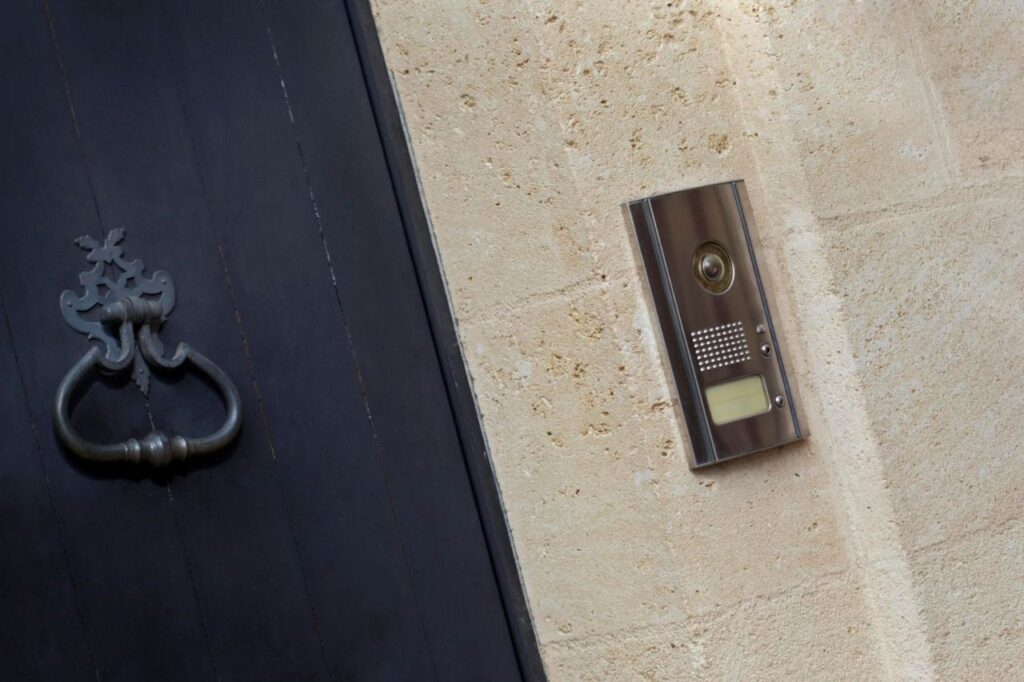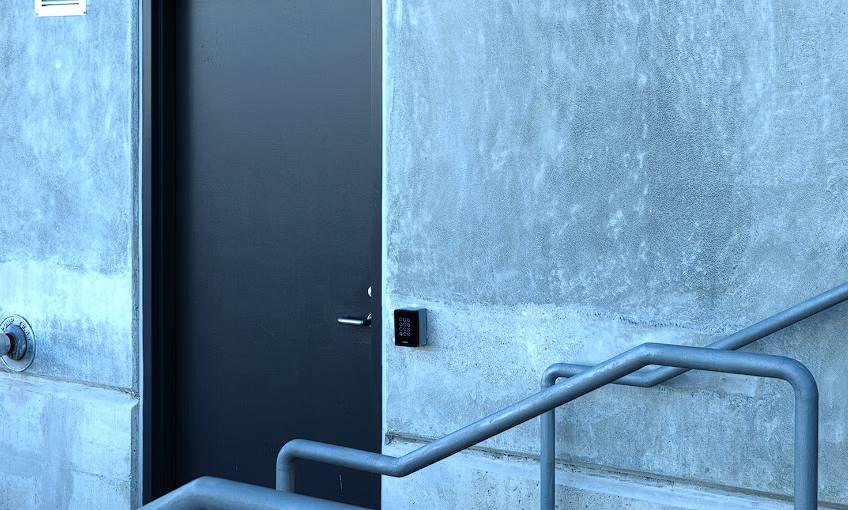Thanks to advancements in technology, businesses are reevaluating their approach to security. CCTV and other forms of electronic access control are prime examples of this.
As time passes, these building technologies become less efficient as newer, more resilient alternatives enter the market. If you care about the safety of your building and its occupants, you must invest in security upgrades. That goes double for any expensive tools or property.
While closed-circuit television keeps an eye out for intruders, an access control system decides who can enter your building. Combining these two technologies enables new forms of protection.
These systems can cooperate, eliminating the need for separate management. As a result, they are more practical in application and simpler to oversee. In addition, integration can safeguard structures for technological advances in the future. You may increase the efficiency of your security plan by investing soon.
This article delves into the topic of CCTV/access control integration. We'll go over the advantages you'll see and the factors you should take into account before upgrading.
CCTV Cameras, Access Control, and Alarms
Closed-circuit television cameras, or CCTV cameras, are used for video surveillance in a contained space. They provide a variety of security and surveillance functions and are, therefore, ubiquitous in today's society.
The term "access control" describes any means by which entry to a building or computer network is managed. Key cards and biometric scans are just two examples of the authentication methods used by access control systems to authenticate a person's identity before deciding whether to provide access to a restricted area or resource.
Alarms are devices or systems that can detect and sound an alarm in the event of a security breach or other danger. Sensors in alarm systems can pick up on things like motion, heat, or smoke to sound an audible or visual alarm.
When CCTV cameras, access control systems, and alarms are integrated, robust security and monitoring infrastructure results. Increased control and monitoring, as well as quicker response times in the event of a security breach or safety hazard, are made possible by this integration.
Benefits of Integrating CCTV Cameras with Access Control and Alarms
Increased security and surveillance, decreased risk of theft and crime, faster response time to security breaches, better identification of perpetrators, and increased safety are just some of the many advantages of integrating CCTV cameras with access control and alarms.
Increased Security and Surveillance
Integrating these technologies has many advantages, one of which is improved security and monitoring. CCTV cameras enable round-the-clock surveillance of a certain area, recording all motion for later review. The installation of cameras may discourage Potential criminals or invaders, as this increases the likelihood that they may be caught in the act.
Reduced Risk of Theft and Crime
Access control technologies like key cards and biometric scans increase safety by limiting who can enter a protected space or item. Theft and other illegal activities can be prevented or at least mitigated by restricting access to only authorised personnel.
Faster Security Breach Response
Integrating CCTV cameras with access control and alarms increases security and speeds up the response time to any security breaches. A speedier response time from security or law enforcement is made possible by alarms, which can also help prevent more serious situations from happening.
Better Identification of Perpetrators
CCTV cameras can also record in high-definition, making it easier to identify and track criminals for prosecution. This video can be presented as evidence in court, bolstering the likelihood of a conviction and discouraging such behaviour in the future.
Enhanced Safety
Integrating these systems also improves security. Both fire and natural disaster alarms and access control systems can be used to keep people safe by limiting who can enter potentially hazardous places. CCTV can also monitor safety precautions to verify they are being followed properly.
A more robust security and surveillance solution is achieved by combining closed-circuit television (CCTV) cameras, electronic access control, and alarms. But remember that these systems can only be as efficient as the planning, implementation, and maintenance that go into them. Maintaining a fully functional integrated system requires constant testing and monitoring, as well as the correction of any problems that may arise.
In conclusion, there are several advantages to combining CCTV cameras with access control and alarm systems to boost security and monitoring. These systems can provide a more robust and effective security solution, giving you more peace of mind and protection against potential threats by lowering the risk of theft and crime and speeding up the response time to security breaches.
How to Integrate CCTV Cameras with Access Control and Alarms
When CCTV cameras, access control systems, and alarms are integrated, robust security and monitoring infrastructure results. There are several crucial stages to this fusion.
Planning and designing the integration
The first order of business is to evaluate the level of protection required in the given region. This includes finding safety dangers and spotting potential security issues, such as theft or vandalism. Once this analysis is complete, choosing the best CCTV cameras, access control systems, and alarms for the premises will be possible.
Choosing compatible systems
The next thing to do is to design the whole system together. Among the considerations here are the locations and types of alarms, access control systems, and CCTV cameras. Designing the system so that it covers as much ground as possible while leaving as few openings as possible is crucial.
Installing and configuring the systems
Once the plan is complete, the system can be put in place. Putting up the CCTV cameras, establishing the access control systems at the entrances, and hooking up the alarms are all parts of this process. A well-executed installation is paramount, with each component securely fastened and checked to ensure correct operation.
The system must be set and calibrated after installation to ensure proper operation. Doing so entails establishing and testing the alarms, setting up user accounts for access control systems, and configuring CCTV cameras' recording and storage settings.

It must undergo regular maintenance and testing to guarantee the integrated system is always operational. Regular testing of CCTV cameras, access control systems, and alarms is required to guarantee accurate data collection, proper access restriction, and timely alarm activation, respectively.
It's not enough to only take these technical measures; you also need to have solid plans in place for running and managing the integrated system. It's important to lay out specific protocols for things like user authorisation, data storage and protection, and response to security or safety incidents.
To sum up, many moving parts are involved in integrating CCTV cameras with other security measures such as access control and alarms. Taking these measures and ensuring the system is well-designed, installed, and maintained can help businesses develop a robust security and surveillance solution to better ward off danger.
Maintenance
The proper functioning and continued efficient security and surveillance of an integrated system consisting of CCTV cameras, access control, and alarms rely heavily on regular maintenance and upkeep. Key factors to keep in mind when performing maintenance and updating the system are as follows:
Regular Inspection and Testing
The performance of the integrated system can be improved through routine testing and inspections that reveal any problems as soon as they arise. This includes testing the alarms to ensure they are tripping as they should, evaluating the access control systems to make sure they are limiting access as intended, and checking the CCTV cameras to ensure they are working properly. Potential security breaches or safety hazards can be avoided if problems are resolved quickly.
Software and Firmware Updates
Software and firmware in security systems like CCTV cameras, access control terminals, and alarms are frequently updated to fix bugs and provide new features. Updates to the system's software and firmware are important because they fix bugs, boost performance, and introduce new features and capabilities. The manufacturer's updates and patches should be installed as soon as they become available.
Data Management
The data produced by an integrated security system is substantial, as it includes video recordings, access logs, and alert reports. You'll need a solid data management strategy to keep this information safe and secure. Data backups should be scheduled regularly, data should be stored in a secure location, and appropriate access controls should be in place to prevent unauthorised access to critical data.
Cleaning and Maintenance
CCTV cameras, access control systems, and alarms cannot continue to function without routine cleaning and maintenance. This involves removing dust and debris from cameras and lenses to improve visibility, inspecting and cleaning access control readers to avoid malfunction, and doing the same for alarms to prevent false alerts. All wires and connectors must be checked and kept in good working order.
Staff Training
An integrated security system can only be managed and operated efficiently with properly trained personnel. Every employee needs to know how to access and evaluate footage, react to alarms and security breaches, and keep the system clean and well-maintained. All employees can benefit from regular training sessions to ensure they know and follow the most current policies and practices.
Hire Professionals
A professional in integrated security systems will have extensive experience in designing, installing, and maintaining systems that combine CCTV cameras with access control and alarms. This person should be well-versed in the most recent advancements in security technology and have a firm grasp on the best methods for developing and deploying an integrated system tailored to the demands of particular clients.
Expertise in this area necessitates a blend of technical abilities, such as familiarity with networking and computer systems and hands-on expertise with CCTV cameras, access control systems, and alarms. An expert should be able to communicate effectively, solve problems creatively, and collaborate closely with clients to meet their unique demands.
To further their knowledge and expertise, professionals in a certain subject should follow changes in the field, participate in professional organisations, and pursue training and certification programmes.
When it comes to designing, installing, and maintaining an efficient and effective security solution for their clients, a specialist in integrating CCTV cameras with access control and alarms will have the necessary knowledge, abilities, and expertise. To give its customers the best possible safety and security, they devote considerable resources to researching and adopting the most cutting-edge tools and procedures.
Conclusion
Due to technological developments, businesses are rethinking their approach to security. CCTV cameras perform video surveillance, and an access control system manages building entry. When these two technologies are combined, it opens the door to novel types of security that are both more effective and easier to manage. The combination of these two systems provides future-proofing for buildings. The benefits of integrating CCTV and access control systems, as well as important issues to consider before making the switch, are discussed in this article.
CCTV cameras, access control systems, and alarms all work well together to form a more effective security and monitoring system. There will be fewer opportunities for theft and crime, a quicker response time in the event of a security breach, easier identification of the culprits, and a safer environment as a result.
Key cards and biometric scans are two examples of access control technology that can be used to ensure that only permitted individuals are allowed inside a building. Alarms for fire and natural disasters and access control systems can help keep people safe by restricting access to high-risk areas. Continuous testing and monitoring, as well as fixing any issues that may develop, are necessary for keeping an integrated system in top working order.
Regular inspection and testing, updated software and firmware, data management, cleaning and maintenance, staff training, and employing professionals in the field of integrated security systems are all crucial considerations when performing maintenance and updating the system. Software and firmware upgrades are crucial for fixing faults and adding new capabilities, and regular testing and inspections can catch issues as soon as they appear.
Scheduled data backups, secure data storage, and appropriate access restrictions are all necessary to protect against unauthorised access to data. Experts in the field of integrated security systems will have worked extensively with systems that combine CCTV cameras with access control and alarms and know how to keep them running smoothly.

Content Summary
- Thanks to advancements in technology, businesses are reevaluating their approach to security.
- CCTV and other forms of electronic access control are prime examples of this.
- If you care about the safety of your building and its occupants, you must invest in security upgrades.
- While closed-circuit television keeps an eye out for intruders, an access control system decides who is allowed to enter your building.
- Combining these two technologies enables new forms of protection.
- These systems can cooperate with one another, eliminating the need for separate management.
- In addition, integration can safeguard structures for technological advances in the future.
- You may increase the efficiency of your security plan by investing soon.
- Closed-circuit television cameras, or CCTV cameras, are used for video surveillance in a contained space.
- They provide a variety of security and surveillance functions and are, therefore, ubiquitous in today's society.
- The term "access control" is used to describe any means by which entry to a building or computer network is managed.
- Key cards and biometric scans are just two examples of the authentication methods used by access control systems to authenticate a person's identity before deciding whether to provide access to a restricted area or resource.
- Alarms are devices or systems that can detect and sound an alarm in the event of a security breach or other danger.
- When CCTV cameras, access control systems, and alarms are integrated, robust security and monitoring infrastructure results.
- Increased control and monitoring, as well as quicker response times in the event of a security breach or safety hazard, are made possible by this integration.
- Increased security and surveillance, decreased risk of theft and crime, faster response time to security breaches, better identification of perpetrators, and increased safety are just some of the many advantages of integrating CCTV cameras with access control and alarms.
- Integrating these technologies has many advantages, one of which is improved security and monitoring.
- Integrating CCTV cameras with access control and alarms increases security and speeds up the response time to any security breaches.
- Integrating these systems also improves security.
- Both fire and natural disaster alarms and access control systems can be used to keep people safe by limiting who can enter potentially hazardous places.
- A more robust security and surveillance solution is achieved through the combination of closed-circuit television (CCTV) cameras, electronic access control, and alarms.
- There are several advantages to combining CCTV cameras with access control and alarm systems to boost security and monitoring.
- These systems can provide a more robust and effective security solution, giving you more peace of mind and protection against potential threats by lowering the risk of theft and crime and speeding up the response time to security breaches.
- When CCTV cameras, access control systems, and alarms are integrated, a robust security and monitoring infrastructure results.
- Once this analysis is complete, choosing the best CCTV cameras, access control systems, and alarms for the premises will be possible.
- Choosing compatible systems The next thing to do is to design the whole system together.
- Installing and configuring the systems Once the plan is complete, the system can be put in place.
- It must undergo regular maintenance and testing to guarantee the integrated system is always operational.
- It's important to lay out specific protocols for things like user authorisation, data storage and protection, and response to security or safety incidents.
- To sum up, many moving parts are involved in integrating CCTV cameras with other security measures such as access control and alarms.
- Taking these measures and ensuring the system is well-designed, installed, and maintained can help businesses develop a robust security and surveillance solution to better ward off danger.
- The proper functioning and continued efficient security and surveillance of an integrated system consisting of CCTV cameras, access control, and alarms rely heavily on regular maintenance and upkeep.
- The performance of the integrated system can be improved through routine testing and inspections that reveal any problems as soon as they arise.
- Updates to the system's software and firmware are important because they fix bugs, boost performance, and introduce new features and capabilities.
- You'll need a solid data management strategy to keep this information safe and secure.
- CCTV cameras, access control systems, and alarms cannot continue to function without routine cleaning and maintenance.
- An integrated security system can only be managed and operated efficiently with properly trained personnel.
- Every employee needs to know how to access and evaluate footage, react to alarms and security breaches, and keep the system clean and well-maintained.
Frequently Asked Questions
Brute-force assaults, guessing passwords and software/hardware flaws are just a few ways access keypads might be compromised.
Multi-factor authentication, routinely changing access codes, monitoring access logs, and employee security awareness training are all good practises for bolstering the safety of a building's access keypads.
It is possible to increase the security of a facility by integrating access keypads with other security measures, such as surveillance cameras, alarms, and biometric scanners.
Keypad malfunction, employee carelessness, and the price of adopting and maintaining secure access keypad systems are all potential problems that may arise when employing access keypads.







